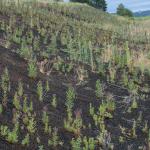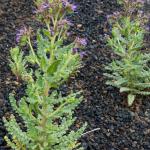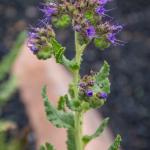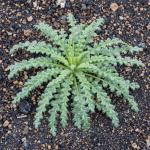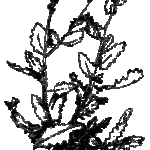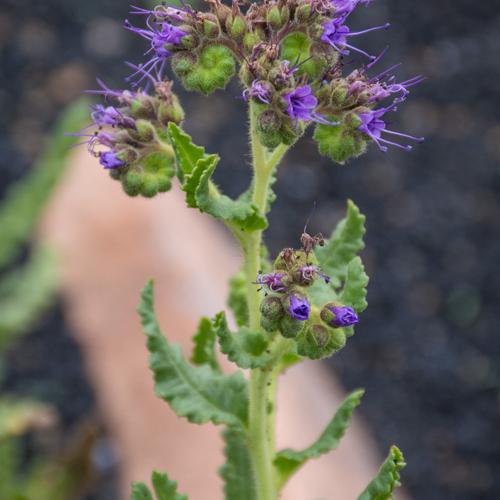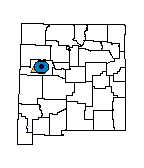Phacelia serrata (Cinder Phacelia)
NONE
| USFWS | State of NM | USFS | BLM | Navajo Nation | State Rank | Global Rank | R-E-D Code | NMRPTC Status | Strategy Status |
|---|---|---|---|---|---|---|---|---|---|
| SEN | S2 | G3 | 1-1-2 | R | SS |
| Overall Conservation Status | Documented Threats | Actions Needed |
|---|---|---|
| UNDER CONSERVED | Mining and quarrying |
document rarity |
Annual; herbage strongly glandular and sticky; stems 1-3.4 dm tall, erect, simple or branched at base, with simple setose, hirsute and multicellular glandular hairs; leaves lanceolate, serrate, dentate to shallowly lobed, 1-4 cm long, 0.5-2 cm wide, with basal leaf cluster especially apparent when young, leaves gradually reduced upward, the upper sessile or nearly so, the lower with petioles to 1.5 cm long; inflorescence of compound scorpioid cymes, setose, puberulent with multicellular stipitate glands; pedicels to 1 mm long; sepals elliptical to oblanceolate, more or less keeled at base, 3.5-6.5 mm long, 1.5-2 mm wide, setose, puberulent and stipitate-glandular; corolla of 5 united petals, rotate (appearing tubular in some pressed specimens), blue to light violet, 3-4 mm long and broad, pubescent; stamens and style exserted, style bifid 3/4 its length, lower 1/4 pubescent; capsule subglobose, 2.8-3.5 mm long, 2-2.5 mm wide, glandular and puberulent; mature seeds 4, elliptical to oblong (sometimes unequally so when one of the margins is involute), dark brown, 3-3.2 mm long, 1-1.3 mm wide, excavated and divided by prominent ridge, the ridge corrugated on one side, the margins corrugated, pitted and often one or both involute, dorsal surface smooth and shiny to somewhat dull, sometimes faintly pitted, the tip and margins darker for part of their length (or at least different in appearance from the rest of the dorsal surface). Flowers July to October, primarily late August and early September.
Phacelia serrata exhibits the unusual combination of restriction to volcanic cinders, late summer flowering, and corrugated seed margins. While Phacelia integrifolia sometimes grows in cinders in the Zuni-Bandera Volcanic Field, it has smooth seed margins, and it does not bloom in the late summer.
New Mexico, Cibola County, Zuni-Bandera Volcanic Field south of the Zuni Mountains; Arizona, San Francisco Volcanic Field.
Primarily in deep volcanic cinders associated with volcanic cones, but also roadcuts and abandoned quarries in open, exposed, sunny locations; near ponderosa pine and piñon-juniper woodlands; 1,800-2,200 m (5,900-7,200 ft).
Apparently no one has systematically looked for this plant between its two known widely-separated occurrences, which are about 320 km (200 mi) apart. Its relationship to other plants in its group is unclear.
This plant grows in a rather unusual and uncommon substrate. Although a portion of the New Mexico habitat is actively quarried for cinders, it can colonize appropriate disturbed areas.
*Atwood, N.D. 1975. A revision of the Phacelia crenulatae group (Hydrophyllaceae) for North America. Great Basin Naturalist 35(2):127-190.
Voss, J.W. 1937. A revision of the Phacelia crenulata group for North America. Bulletin of the Torrey Botanical Club 64:80-81, 133-144.
For distribution maps and more information, visit Natural Heritage New Mexico

